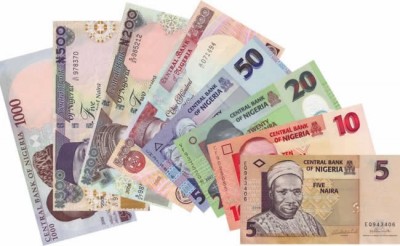
As Nigeria continues to defend its embattled currency, ratings agency Standard & Poor’s (S&P) predicts the country will be forced to devalue the naira, its national currency, in 2016.
“The Nigerian government line is to hold as much as possible..but at some point they are going to have to move. When they do, they will try do so incrementally,” says Ravi Bhatia, director of sovereign ratings at S&P.
Mr Bhatia predicts devaluation will take place “within 2016” in one or two increments amounting to about 20 percent.
The impact, however, will be limited. “It will help a little, but the fundamental problems will not go away. There is no easy avenue out in this low oil environment unless you have massive foreign exchange reserves built up during the good times, which they did not do,” he says.
The naira is currently trading at about N300 to the dollar at unofficial rates. The official rate has been held at N199/$ since February 2015.
Analysts have been very critical of the “market distorting measures” adopted by the government to try and contain the economic fallout, including stock market circuit breakers intended to stymie volatile trading on the Lagos exchange.
China abandoned a similar policy after only four days, concluding the measures induced more panicked selling.
Nigeria is Africa’s leading oil producer, and its finances have been hard hit by a 75 percent drop in the price per barrel in the past year. After devaluing once in 2015, officials have repeatedly denied another rate cut is in the offing.
Instead, the administration of president Muhammadu Buhari has tried to stimulate the non-oil economy by restricting a list of imports and instituting currency controls.
Nigeria currently relies on oil for 75 percent of government revenues and 90 percent of exports.
While diversification will be a boon in the long term, however, such non-oil revenues will have little impact in the short term.
As to the wisdom of holding out against devaluation for so long at the expense of depleting national reserves and rationing dollar availability to spooked investors, Mr Bhatia says domestic concerns come into play.
“Fundamentally Nigeria is still a poor country, and concerns about imported inflation are legitimate,” he says.
Tough year ahead
Overall there will not be many bright spots for African sovereigns heading into 2016, according S&P’s analysis. Currently, of the 18 rated countries across the region, only Botswana and South Africa are at investment grade.
“We are going to see quite a lot of challenges through 2016,” Mr Bhatia says. “Across the board there is not that much positive news.. most of Africa is facing pressure.”
All countries remain in positive growth and the region as a whole is set to grow at 4 percent according to the IMF – a faster rate than other regions. However, high exposure to China and slumping commodities prices are taking their toll.
Debt servicing is becoming increasingly problematic. S&P estimates that for more than one third of the rated sovereigns in the region, interest expenditures will reach or exceed 10 percent of government revenues within the next three years.
Despite this, he still expects a fair amount of eurobond issuance as governments scramble to plug gaps in national budgets. Repeat issuances from the likes of South Africa, Angola, Nigeria, Kenya and Ghana are likely, with DRC likely to make a first foray into the market.
But with the exception of Nigeria, Kenya and South Africa, Mr Bhatia expects most countries will have to borrow at yields in the high single digits or low double digits. “Out of necessity they may be willing to take on issuance at high rates,” he says.
THIS IS AFRICA
END

Be the first to comment